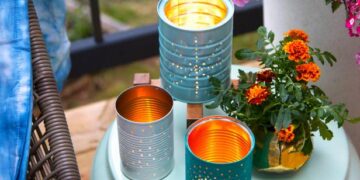Introduction Temperature Probes:
Temperature probes are indispensable in various fields, from scientific research to industrial applications and everyday household use. These devices play a crucial role in measuring and monitoring temperature accurately, providing valuable data for analysis and decision-making. This comprehensive guide delves into the workings of temperature probes, their types, applications, and key considerations for selecting the right probe for specific needs.
- What are Temperature Probes? Temperature probes, also known as temperature sensors or thermometers, are devices designed to measure temperature in different environments and conditions. They consist of a sensing element that responds to changes in temperature and converts them into electrical signals. These signals are then processed and displayed as temperature readings.
- Types of Temperature Probes: a. Thermocouples are among the most common types of temperature probes. They consist of two dissimilar metal wires welded together at one end. When exposed to temperature changes, thermocouples generate a voltage proportional to the temperature difference between the hot and cold junctions, allowing for temperature measurement. b. Resistance Temperature Detectors (RTDs): RTDs are sensors made of materials whose electrical resistance changes predictably with temperature. Platinum is commonly used in RTDs due to its stability and linearity. RTDs offer high accuracy and stability, making them suitable for precise temperature measurements. c. Thermistors: Thermistors are semiconductor devices whose resistance varies significantly with temperature. They are typically made of ceramic materials and are highly sensitive to temperature changes. Thermistors are commonly used in applications where high accuracy and sensitivity are required, such as medical devices and HVAC systems. d. Infrared (IR) Thermometers: IR thermometers, also known as non-contact thermometers, measure temperature by detecting infrared radiation emitted by an object. They do not require direct contact with the measured object, making them ideal for measuring temperature in hazardous or hard-to-reach environments. e. Bimetallic Thermometers: Bimetallic thermometers utilize the principle of differential expansion of two metals bonded together. The metals expand or contract at different rates as temperature changes, causing the probe to bend. This bending motion is converted into a temperature reading, allowing for temperature measurement.
- Applications of Temperature Probes: Temperature probes find wide-ranging applications across various industries and sectors, including: a. Industrial: Temperature probes are used in industrial processes for monitoring and controlling temperature in manufacturing, food processing, pharmaceuticals, and chemical production. b. HVAC (Heating, Ventilation, and Air Conditioning): Temperature probes are integral to HVAC systems for maintaining comfortable indoor temperatures and ensuring efficient operation. c. Automotive: Temperature probes are employed in automotive engines and exhaust systems to monitor engine, exhaust gas, and coolant temperatures. d. Medical: Temperature robes play a vital role in medical devices such as thermometers, incubators, and anesthesia machines for monitoring patient temperature and maintaining precise temperature control. e. Environmental Monitoring: Temperature probes are used in environmental monitoring systems to track temperature variations in air, water, soil, and climate research. f. Aerospace: Temperature probes are utilized in aerospace applications to measure temperature in aircraft engines, fuel systems, and spacecraft. g. Research and Development: Temperature robes are essential tools in scientific research for studying temperature-dependent processes and phenomena in physics, chemistry, biology, and materials science.
- Key Considerations for Selecting Temperature Probes: When choosing a temperature probe for a specific application, several factors should be considered, including a. Temperature Range: Consider the operating temperature range required for your application and select a probe that can accurately measure within that range. b. Accuracy: Determine the level of accuracy needed for your measurements and choose a probe with the appropriate accuracy specifications. c. Response Time: Evaluate the response time of the probe, which refers to how quickly it can detect and respond to changes in temperature. d. Environment: Consider the environmental conditions in which the probe will be used, including factors such as moisture, chemical exposure, and vibration. e. Calibration: Ensure the temperature probe is calibrated properly and regularly to maintain accuracy and reliability. f. Cost: Evaluate the cost-effectiveness of the probe to its performance and suitability for the intended application.
Conclusion:
Temperature probes are essential instruments for measuring and monitoring temperature in diverse applications across industries. Understanding the different types of temperature probes, their working principles, and key selection criteria is crucial for choosing the right probe for specific needs. Users can ensure accurate temperature measurements, enhance process efficiency, and maintain quality and safety standards by selecting the appropriate temperature probe.




































